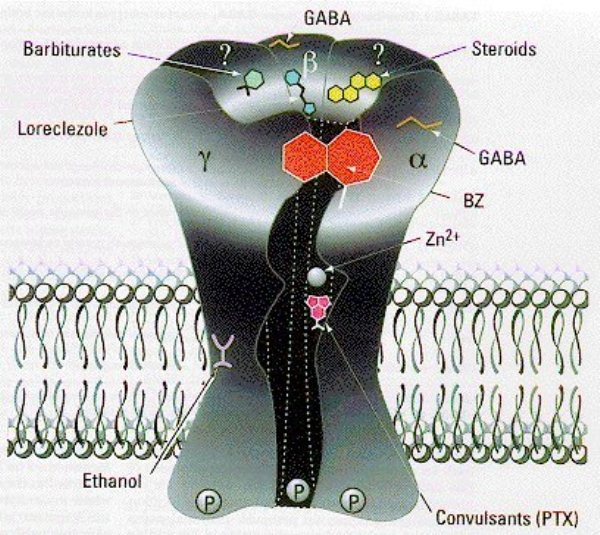Home » natural health »
GABA (GAMMA-AMINO BUTYRIC ACID): The perfect tranquillizer
Imitation may be the sincerest form of flattery, but for pharmaceutical companies it’s also an easy way to profit at the expense of a nutrient. GABA is an effective, thoroughly safe nutritional tranquillizer that some people need to control seizures or rise above depressive feelings. However, the drug industry chose to invent Valium, an addictive medication that merely mimics how GABA works in the brain.
Gamma-amino butyric acid is both an amino acid and a neurotransmitter, one of the chemicals that enables the trans-mission of nerve impulses between cells in the brain. Few people, in theory, need to worry about taking supplements, but the reality may be different. Exposure to oestrogens, free radicals, salicylates or food additives can affect our internal supply. A low-protein diet can also hinder production, as can an insufficient amount of zinc or vitamin B6, both of which help the body to make the nutrient.
THE GIFT OF GABA
When the brain is confronted with a lack of its most widely distributed neurotransmitter, several GABA-related disorders may develop.
Anxiety
In their heyday, Valium and the other drugs in the benzodiazepene family were used by some 15 per cent of all Americans and was widely taken in the UK too. They induce the same changes in brain chemistry that nature intended GABA to perform. The only difference is that GABA isn’t addictive or otherwise harmful. A natural relaxant and tranquillizer that won’t knock you out, GABA is entirely safe to use during waking hours. How unlike the prescription pretenders! I prescribe GABA quite often for patients who seem nerve-racked. At the next visit almost all of them comment on their improvement.
Depression
Whether as an independent emotional disorder or a comparatively minor side effect of premenstrual tension, depression seems to be associated with a low GABA level. Women whose hormonal changes caused depressive feelings, one study found, had significantly lower GABA measurements compared with women whose moods were unaffected by menstrual changes. Restoring the supply has helped to lift spirits.
Convulsions
Especially in children, seizure disorders frequently coincide with a low GABA level. Taurine’s seizure-controlling ability probably stems from its ability to raise GABA levels in the brain. The anticonvulsant drug valproic acid works through the same mechanism. But GABA itself has been shown to be useful in seizure control.
In other therapeutic areas, 2 grams of GABA per day have helped to improve speech and restore memory loss in people who have had a stroke. The same amount has been found to decrease high blood sugar, while a daily 3 gram dosage appeared to reduce blood pressure and bolster overall heart function. Further research on GABA, if there would be someone willing to fund it, promises to prove it to be one of our most useful amino acids.
SUPPLEMENT SUGGESTIONS
Independent of diet but with the assistance of a few other nutrients, the body usually manufactures all the GABA it requires. A lack of either zinc or vitamin B6 could reduce the brain’s GABA concentration enough to prompt convulsions or another neural disorder. The vast majority of us, however, will be taking zinc and B6 supplements for other health reasons (part of the beauty of Targeted Nutrition is its ability to fill several nutrient needs simultaneously).
To take the edge off of anxiousness and irritability, a dosage anywhere between 500 mg and 4 grams a day usually works well. Beyond that amount, especially for seizure disorders or depression, see a doctor. Large doses can cause nausea and other side effects.






0 Comments
You can be the first one to leave a comment.